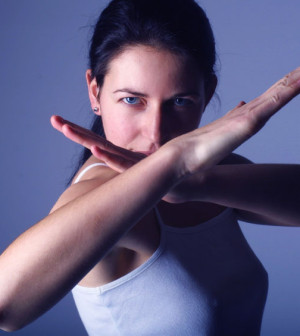- How We Kept Marital Peace while Traveling the World with Our KidsPosted 1 week ago
- How I Coped with Feeling Lost in a Changing SocietyPosted 1 week ago
- The Unexpected Liberation of a Butt DialPosted 1 month ago
- Why is France making abortion a constitutional right?Posted 2 months ago
- Being a WomanPosted 2 months ago
- Grief Threatens To Take Your Power- You Can Get It Back!Posted 2 months ago
Lingerie Football? Women and Gender Inequity in Sport

By Jennifer Heard.
When you ask Canadian women about gender equity in sports, they will immediately start talking about such outstanding female stars as Christine Sinclair, Hailey Wickenheiser, Rosie MacLennan, or Jennifer Heil.
Yet, in the overall battle for gender equity, sport is the final frontier. A series of affirmative action measures are necessary, especially pay equity at the professional level, as well as essential measures to combat homophobia and sexual exploitation of female athletes in the media.
It was not until 1908 that women were allowed to compete in the Olympics, and then it was only in the “feminine” sports of tennis and figure skating. It was only in 1998 at the Nagano Winter Games in Japan that women’s ice hockey was introduced. Today, women participate in all the same sports as men, except boxing and wrestling.
Last summer in London, women were represented on every single national team for the first time. Before that, several countries (especially Muslim ones) didn’t send any women to the Olympics. In London, for the first time, women made up 45% of 10,500.
This movement toward equity in the number of female participants is encouraging, yet true equity at the modern Olympics has not been achieved in the past 116 years!
To overcome this inequality, we need a feminist model of women’s sports in which women who display physical prowess and performance can choose to compete on an equal basis with men in most sports.
For example, it would be exciting to watch the tennis champion, Venus Williams, challenge a man with her serve which can be clocked at 208 km/h, far faster than most men.
Considering that female athletic performance in general is so devalued, it is not surprising that there is an enormous gap in pay scales at the professional level. When Forbes magazine published its list of the 50 top paid athletes in the world in 2011, there was not a single female athlete on the list!
The highest paid female athletes tend to earn their income based on their attractiveness and not their athletic ability. Maria Sharapova, the Russian tennis star, is ranked fourth in her sport, and yet she earns the highest income. It is hardly a coincidence that she is white, blonde, tall and skinny, in short, “attractive.” Last year she earned $26 million, while male tennis player, Roger Federer, ranked number one due to his athletic talent earned twice as much – $52 million – last year!
This pay inequity underscores the double standard in sports where men are paid according to ability and women are paid according to their attractiveness.
The men who market sports seem to think that men will only watch female sports if the athletes are dressed in scanty clothes and have sex appeal. For example, the Women’s Tennis Association recently launched its Strong is Beautiful campaign in which the stars are dressed in frilly short skirts, wearing makeup and looking glamorous. Until recently, the International Volleyball Association (IVA), required that female athletes wear skimpy bikinis on the court. The IVA only changed the rules last year under pressure from religious countries which prohibit such uniforms. Even more appalling is the existence of the Lingerie Football League which was started in the United States three years ago. Lastly, a Bikini Hockey League in which females play the sport on inline skates in bikinis was started last year.
The sexual portrayal of female athletes in the media is reinforced by a subtle type of homophobia. Women are “supposed” to be feminine, graceful, and less naturally athletic. Female athletes who do not conform to this stereotype are thus labelled “unnatural.” This is a powerful weapon that society uses to keep them in line. This is why the media focuses on sex appeal to sell women’s sports in the media. Little thought has been given to the fact that this exploitation of female athletes actually turns off and appalls female viewers.
Recent research indicates that athletic ability, rather than sexual attractiveness determines whether fans pay to attend sports events. Focusing on the sex appeal of female athletes actually has a harmful effect in the eyes of the consumer. “Consumers care about a female athlete’s skill, not the sports she plays, her femininity, her sex appeal, or her sexual orientation.”
What attracts people today to women’s sport is the same thing that attracts people to men’s sport – amazing athletic ability and exciting competition, not their sexual appearance! Gender equity may have come a long way in Canada and other parts of the world, but there is a long road ahead. Feminists and those who truly care about gender equity in sport should borrow the famous slogan from Nike and, “Just do it!”
 Jennifer Heard is a 26-year-old from Toronto, Ontario. In 2010 she obtained an honors degree in political science and French and has worked on over a dozen Canadian political campaigns since 2006. Today Jennifer is busy arguing her point of view due to her passion for women’s rights.
Jennifer Heard is a 26-year-old from Toronto, Ontario. In 2010 she obtained an honors degree in political science and French and has worked on over a dozen Canadian political campaigns since 2006. Today Jennifer is busy arguing her point of view due to her passion for women’s rights.







